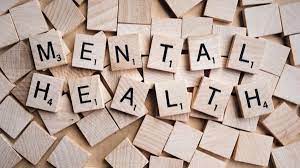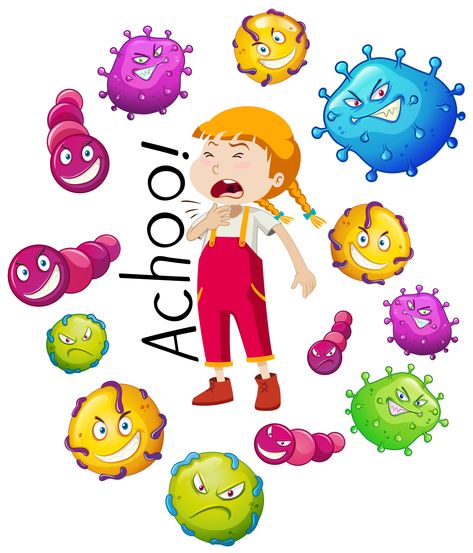- Classroom Door Decorating Contest: Have students work together to decorate their classroom doors with a Red Ribbon Week theme.
- Wear Red Day: Encourage students and staff to wear red clothing or accessories to show support for Red Ribbon Week.
- Poster Contest: Organize a school-wide poster contest where students compete to create the most creative and informative Red Ribbon Week-themed poster.
- Red Ribbon Pledge: Have students sign a “Drug-Free Pledge” to demonstrate their commitment to stay drug-free.
- Classroom Bulletin Board: Create a Red Ribbon Week-themed bulletin board that showcases facts and information about drug prevention and healthy choices.
- Daily Morning Announcements: Share facts and statistics about drug abuse and prevention during morning announcements, highlighting the importance of staying drug-free.
- Guest Speakers: Invite local police officers, community leaders, or recovered addicts to speak to students about the dangers of drugs and alcohol.
- Themed Dress-Up Days: Designate different days for creative dress-up themes related to Red Ribbon Week, such as “Crazy Hair Day” or “Pajama Day.”
- Drug-Free Slogan Desktop Wallpaper: Encourage teachers and students to change their computer desktop wallpaper to a drug-free slogan/image for the week.
- Essay Contest: Hold an essay contest where students share personal stories or their thoughts on why it’s essential to remain drug-free.
- Drug-Free Skits: Encourage drama classes or clubs to create skits promoting a drug-free lifestyle during assembly programs or lunchtime performances.
- School-Wide Rally: Hold a school-wide rally promoting drug prevention and encouraging students, staff, and families to live a healthy lifestyle.
- Movie Screening: Show an age-appropriate movie about addiction, recovery, or personal growth, followed by a discussion on making good choices.
- Red Ribbon Bingo: Create a bingo game with drug-free messages and play it during homeroom or advisory periods.
- Red Ribbon Bookmarks: Distribute drug-free message bookmarks to students to use in their textbooks or library books.
- Public Service Announcement Contest: Have students create videos or audio clips on the importance of a drug-free lifestyle and share them during lunchtime or school-wide announcements.
- Drug Facts Scavenger Hunt: Organize a scavenger hunt where students search for hidden drug facts or prevention messages around the school.
- Health Fair: Collaborate with local health organizations to host a health fair that focuses on providing information about drug prevention, addition, and recovery resources available in the community.
- Red Ribbon Photo Booth: Set up a fun photo booth with Red Ribbon Week-themed props for students and staff to take pictures together, promoting a drug-free lifestyle.
- Support Groups: Discuss the importance of support groups and encourage students to share their experiences or seek help if needed.
- Fitness Challenges: Organize fitness challenges like relay races or obstacle courses encouraging teamwork, physical activity, and promoting overall health.
- Share Success Stories: Invite graduates who have overcome addiction to share their stories with current students, inspiring them to make good choices.
- Community Mural: Collaborate with local artists to create a giant drug-free themed mural to display permanently at the school or in the community.
- Chain of Commitment: Have each student write their commitment to living a drug-free life on a strip of red paper. Connect the strips together to create a long chain symbolizing unity and support throughout the school.
- Reflection Journals: Encourage students to maintain a reflective journal during Red Ribbon Week, detailing what they have learned and how they can apply it in their daily lives.
Do Today’s Students Have More Mental Health Issues?
In recent years, mental health has emerged as a critical issue that affects millions of people worldwide. As awareness of mental health issues increases, the question arises: do today’s students have more mental health problems than previous generations?
The answer to this question is multifaceted and complex. There are various factors to consider when examining the prevalence of mental health issues among students today. Some researchers argue that today’s students might be more susceptible to mental health problems due to several factors, including increased academic pressures, societal expectations, and social media’s impacts.
One significant factor contributing to students’ mental health issues is the rising academic pressures they face. Today’s students are expected to perform at a higher level than their predecessors in an increasingly competitive environment. Increasingly demanding coursework and the constant pressure to excel academically cause stress and anxiety among many students. These pressures can lead to a variety of mental health issues, such as depression, anxiety disorders, and burnout.
Another reason why today’s students might have more mental health issues is that societal expectations have shifted significantly over time. With advances in technology and globalization, the modern world has become more complex and demanding. This rapid change can create a sense of uncertainty and insecurity for many young people as they navigate through their education journey. Furthermore, the stigma surrounding discussing or seeking help for mental health concerns still permeates society, inhibiting individuals from reaching out for assistance.
The increased prevalence of social media use among today’s students is a double-edged sword concerning their mental well-being. Platforms like Instagram, Facebook, and Twitter enable staying connected with friends and family members at all times effortlessly; on the other hand, these same platforms can also lead to unhealthy comparisons with peers who seem to lead ‘perfect’ lives. Consequently, this can lead some individuals down the spiral of low self-esteem, depression, or anxiety.
Having said that, it bears mentioning that better awareness, diagnosis, and destigmatization of mental health issues may also contribute to the perception that today’s students experience more mental health issues. Mental health problems often went overlooked in the past due to a general lack of understanding or recognition by both individuals and professionals. As awareness has increased, so has the acknowledgment of these issues, leading to an apparent increase in prevalence among modern students.
In conclusion, it is reasonable to believe that today’s students face heightened levels of mental health issues influenced by various factors such as academic pressures, societal expectations, and social media’s impact. However, this perception might also be a result of increased awareness and acknowledgement of mental health concerns. It is crucial to continue fostering open conversations surrounding mental wellbeing while implementing proactive measures in schools and society to support these young individuals’ emotional growth and development.
The Critical Lessons of Our School Cafeterias
Introduction
School cafeterias are much more than just a place to eat, they play a vital role in the overall development of students. Throughout history, these seemingly inconspicuous spaces have transformed into dynamic platforms for learning essential life skills, pivoting on socialization, adaptability, time management, and healthy eating habits. This article explores the critical lessons one can glean from observing our school cafeterias.
1. Socialization and Interpersonal Skills
Cafeterias create natural environments for students to interact with one another, thereby fostering social skills. By providing a communal space for students, differing age groups and backgrounds have the opportunity to communicate and connect – cultivating empathy, nurturing friendships and developing an understanding of effective teamwork.
2. Adaptability and Decision-making
Lunch hours often cluster several food options on their menus. Therefore, the act of choosing one’s meal encourages decision-making as well as adaptability in making spontaneous choices. This skill transfers to adulthood as students learn the importance of flexibility in their choices amidst external pressures.
3. Time Management
With lunch breaks granting only limited time for students to select or prepare their meal, eat it at leisure and engage in any additional activities, students are unwittingly nudged to enhance their time management prowess. As each student develops unique strategies for conquering lunchtime’s ticking clock, they also attune their mental clock to maximize productivity.
4. Healthy Eating Habits
By offering an assortment of nutritious meals, school cafeterias shed light on the impact of healthy eating habits on cognitive growth and academic performance. By exposing children to diverse choices reflecting varied cultural backgrounds and dietary preferences, young minds learn the importance of adopting wholesome dietary habits early on in life.
5. Environmental Awareness
School cafeterias can also be potent staging grounds for creating awareness regarding environmentally-friendly practices like reusing utensils or reducing food waste by properly portioning meals. Schools may introduce relevant initiatives to drive home these eco-conscious values in their students, thereby shaping a generation of environmentally-sensitive individuals.
Conclusion
The significance of school cafeterias goes beyond merely providing sustenance. They offer invaluable life lessons illuminating the path of self-improvement and wellness that are essential to the holistic growth of a student. As such, it is crucial to continually invest in these spaces to enhance the lives and futures of the young people they serve.
Why It’s So Hard Being Both a Parent and Teacher During Flu Season
Introduction:
Flu season presents a challenge for everyone, but it can be especially tough on those who are both parents and teachers. Juggling parenting responsibilities with professional duties while also trying to stay healthy can be quite overwhelming. This article will discuss the various aspects that make this challenging time even more demanding for parents who are also teachers.
1. Increased risk of exposure to illness:
As a teacher, you are continually exposed to germs from students, ranging from harmless bacteria to dangerous viruses like the flu. When you come home to your family, you inadvertently increase the chances of them getting sick too. This cycle continues as your children can also bring home germs from school or daycare, potentially perpetuating a vicious circle of illness.
2. Balancing family health and work demands:
It’s understandable that during flu season, you would want to be extra vigilant when it comes to maintaining your family’s health. However, as a teacher, it can be tough trying to balance these needs with the responsibilities of educating and supporting your students.
When one or more of your family members become ill, taking care of them might force you to take time off from work, which disrupts lesson plans and affects student learning.
3. Emotional stress:
Dealing with sick family members while trying to manage work-related requirements during flu season can lead to emotional stress for parents who are also teachers. Worrying about the health and well-being of your loved ones while still ensuring that you provide an optimum level of education for your students can significantly impact mental health.
4. Strained work-life balance:
During flu season, parents who are teachers often struggle with an unbalanced work-life dynamic because illness-related complications place added stress on day-to-day activities at home and in the classroom. You may feel like you’re never truly disconnected from work when taking care of a sick child, leading to limited time for rest and recuperation.
5. Teaching in a sub-optimal environment:
Despite your best efforts to prevent it, you may still fall ill during flu season. Continuing to teach while sick can have a detrimental effect on your lesson quality and overall performance in the classroom. In such cases, taking time off to recover and recharge can be beneficial not only for your health but also for the students you’re teaching.
Conclusion:
Being both a parent and teacher during flu season poses multiple challenges. Striking the right balance between taking care of one’s family and performing teaching duties as effectively as possible can be overwhelming but essential. It is crucial to prioritize self-care, ensuring that you’re able to perform your tasks within reasonable limitations. By finding ways to manage stress, maintain health, and create balance within daily life, parents who are also teachers can successfully navigate through flu season.
The Nourished Teacher: Easiest Salmon Ever
As educators, we often find ourselves with a multitude of responsibilities – juggling lesson plans, grading, and administrative tasks. With such a hectic schedule, it’s essential for teachers to prioritize their health and nourishment. One delicious and effortless way to achieve this is by incorporating a dish like the Easiest Salmon Ever into your meal plan.
Salmon is an excellent source of lean protein, omega-3 fatty acids, and essential nutrients critical for maintaining a healthy body and mind. This simple yet flavorful dish will leave you both satisfied and nourished, ready to conquer the challenges that each day as an educator brings.
**Recipe:**
*Ingredients:*
– 1 lb salmon fillet
– 2 tablespoons olive oil
– 2 cloves garlic, minced
– 1/2 teaspoon dried parsley or 1 tablespoon fresh parsley, chopped
– Salt and pepper, to taste
– Lemon slices (optional)
*Instructions:*
1. Begin by preheating your oven to 375°F (190°C). While the oven heats up, line a baking sheet with aluminum foil or parchment paper.
2. Now, prepare your salmon fillet. Ensure it’s free of scales and place it skin-side down on the lined baking sheet. Pat the surface dry with a paper towel.
3. In a small bowl, mix together the olive oil, minced garlic, parsley, salt, and pepper until well combined.
4. Gently apply this mixture on top of the salmon fillet evenly using a spoon or brush.
5. Optional: Place lemon slices on top of your seasoned salmon for added flavor and garnish.
6. Bake your salmon in the preheated oven for about 12-15 minutes or until it flakes easily with a fork. The cooking time may vary depending on the thickness of your fillet.
7. Once your salmon is fully cooked, remove it from the oven and let it rest for a couple of minutes. Afterward, you can choose to plate your salmon whole or portioned into individual servings.
Voilà! You now have a mouth-watering and nutritious meal in just about 20 minutes or less, allowing you to continue to focus on nurturing your students while also taking care of your well-being. Feel free to pair this delectable dish with a side of roasted vegetables or quinoa for added nutrients and flavor. The Nourished Teacher’s Easiest Salmon Ever truly lives up to its name by providing an effortless way to stay healthy while navigating the demanding world of education.
Principals, It’s Time To Embrace Mental Health Days
Introduction:
In recent years, the conversation surrounding mental health has gained much-needed attention in society. Teachers and educators are increasingly recognizing the impact of mental health on students’ well-being and academic performance. However, there is still one crucial element that must be addressed: mental health days for principals. As leaders of educational institutions, principals not only bear the responsibility for their students’ growth but also their own well-being. This article explores why embracing mental health days is essential for principals.
1. The Heavy Burden on Principals:
Principals carry immense responsibility in shaping school culture and fostering a positive learning environment. They face countless daily challenges, including managing staff, budgets, student behavior, and curriculum implementation. The stress and pressure can take a toll on their physical, emotional, and mental health – making it vital for them to prioritize self-care.
2. Recognizing the Importance of Self-care:
Self-care is not a luxury; it’s a necessity for individuals in high-pressure roles such as principals. Embracing mental health days allows principals to recharge their batteries and come back refreshed and revitalized, ready to lead with renewed vigor and enthusiasm.
3. Leading by Example:
By prioritizing their own mental health and well-being, principals are setting an example for the entire school community. Encouraging staff to take care of themselves, demonstrating healthy work-life balance habits, and acknowledging that everyone needs time to rest fosters an empathetic culture where self-care is valued as an essential aspect of success.
4. Enhanced Decision-making Capacities:
A healthy mind can make better decisions when faced with complex issues affecting schools daily. By taking mental health days as needed, principals can ensure they are functioning at their highest capacity – ultimately benefiting the school community at large.
5. Reducing Burnout Rates:
Burnout is a genuine threat to school administration. By embracing and encouraging mental health days, principals can mitigate burnout’s potential risk – supporting the long-term success of both their careers and their schools.
Conclusion:
It’s time for school principals to embrace mental health days as an essential component of self-care and professional development. By leading by example, promoting a culture of well-being, and implementing policies that support mental health days for all staff members, principals can create more resilient and successful school environments. It is crucial to remember that a healthy mind leads to better decision-making, essential for thriving students, staff, and communities.
Too Many Screens Are Hurting Our Tweens’ and Teens’ Eyes
Introduction:
The digital age has brought with it a myriad of benefits, from instant access to information to facilitating global communication. However, there’s a downside to this technological revolution—too much screen time is harming our tweens’ and teens’ eyes.
The Dangers of Excessive Screen Time:
Increased screen time has been found to cause a range of issues for young people’s eyes. Among these are the following:
1. Digital Eye Strain (DES): Prolonged and uninterrupted screen exposure can cause Digital Eye Strain, also known as Computer Vision Syndrome (CVS). Symptoms of DES include tired, itchy, or watery eyes, blurred vision, headaches, neck pain, and difficulty focusing.
2. Myopia: Also known as nearsightedness, myopia is becoming more common and affecting children at a younger age. Studies have shown a direct correlation between excessive screen time and the development of myopia in young people.
3. Dry Eye Syndrome: Staring at a screen decreases our blink rate by 50-60%, leading to less tear production resulting in dry and irritated eyes.
4. Blue Light Exposure: The blue light emitted by screens can disrupt sleep patterns for tweens and teens. It has also been linked to long-term eye problems like age-related macular degeneration (AMD) and retinal damage.
Preventive Measures:
Here are some steps parents and caregivers can take to protect their children’s eyes from the adverse effects of excess screen usage:
1. Encourage regular breaks: Follow the 20-20-20 rule; every 20 minutes, encourage your tween or teen to take a 20-second break and focus on something that is 20 feet away from them. This will help relieve eye strain.
2. Limit screen time: Set limits on daily screen time for your child and ensure they spend time outdoors or engage in other activities away from screens.
3. Adjust device settings: Ensure screens on devices are set to appropriate brightness levels, and opt for larger fonts or text-to-speech options when possible to reduce eye strain.
4. Blue light filter: Consider using a blue light filter app or screen protector on digital devices to reduce blue light exposure.
5. Maintain distance: Encourage your child to maintain a comfortable distance from their screen, ideally about 20-28 inches away.
6. Visit the eye doctor: Regular eye check-ups can help identify early signs of vision problems like myopia and address them promptly.
In Conclusion:
Excessive screen time is having a detrimental effect on our tweens’ and teens’ eyes, leading to various health issues. By encouraging regular breaks, limiting daily screen exposure, and implementing preventative measures, both parents and children can work together to promote better eye health and overall well-being.
Diabetes | Teaching Expertise
Introduction:
Diabetes is a chronic health condition that affects millions of people worldwide. It is a disorder in which the body’s ability to produce or respond to insulin is impaired, resulting in abnormal metabolism of carbohydrates and elevated levels of glucose in the blood and urine. As an educator, it is crucial to understand the complexities surrounding diabetes and how it can impact students in the learning environment. This article delves into essential information about diabetes, its types, symptoms, impact on learning, and strategies to support students with this condition.
Types of Diabetes:
There are two main types of diabetes – Type 1 and Type 2.
1.Type 1 Diabetes: Also known as juvenile diabetes, this type occurs when the body fails to produce insulin due to the autoimmune destruction of pancreatic beta cells. People with Type 1 diabetes need to administer insulin externally to manage their blood sugar levels.
2.Type 2 Diabetes: It is a more common form of diabetes wherein the body cannot use insulin effectively (insulin resistance), leading to high blood sugar levels. Type 2 diabetes is often associated with obesity, physical inactivity, and genetics.
Symptoms of Diabetes:
Early detection is vital for effective management of diabetes. Some common symptoms include:
– Increased thirst and frequent urination
– Extreme hunger
– Unexplained weight loss
– Fatigue
– Blurred vision
– Slow-healing sores or frequent infections
Impact on Learning:
Diabetes can significantly impact a student’s learning experience due to various factors such as fluctuating blood sugar levels, fatigue, stress, anxiety, and frequent need for medical attention. These challenges may result in decreased concentration, memory issues, mood swings, and low self-esteem among students with diabetes.
Supporting Students with Diabetes:
As an educator, you can help students with diabetes by implementing these strategies:
1.Collaboration: Keep open communication with the student, their parents, and healthcare team to understand specific needs and develop an individualized healthcare plan.
2.Flexibility: Offer flexibility in assignments and attendance policies to accommodate for medical appointments, blood glucose monitoring, insulin administration, or other required self-care tasks.
3.Classroom Environment: Create a supportive and inclusive environment by educating peers about diabetes and fostering empathy. Encourage students to ask questions and share experiences related to the condition.
4.Regular Monitoring: Observe the student’s behavior for any symptoms of high or low blood sugar levels and respond accordingly.
5.Encourage Healthy Habits: Promote physical activity, balanced nutrition, and regular routines to help manage diabetes effectively.
Conclusion:
Educators play a crucial role in the overall well-being of students with diabetes. By understanding the implications of this condition and adopting appropriate teaching strategies, you can create a positive impact on the academic success and emotional growth of your students with diabetes. Remember that open communication, collaboration, and empathy are vital in supporting these learners in achieving their full potential.
Fire Safety T-Shirts for Your Team Giveaway: Combining Style and Safety Awareness
Introduction:
Fire safety is a crucial aspect of every workplace, community, and household. It is essential to spread awareness regarding fire safety measures to minimize fire incidents that may have severe consequences. One innovative way to promote fire safety awareness is by organizing a giveaway of fire safety-themed t-shirts for your team. These shirts not only work as a conversation starter but also serve as a constant reminder of the importance of adhering to fire safety practices.
Design and Customization:
When designing your fire safety t-shirts, consider incorporating relevant graphics, slogans, or messages that convey the importance of fire safety vividly. Some popular design ideas include images of fire extinguishers, firefighting equipment, or even humorous yet effective slogans such as “Keep calm and extinguish fires.” You can also incorporate your organization’s logo or personalize the shirts with your team members’ names.
Quality and Comfort:
Choose high-quality fabrics that are breathable and comfortable for your fire safety t-shirts. Options like 100% cotton or blends with moisture-wicking properties are ideal for all-day wear. Ensure that the printing technique used on the shirts does not compromise their comfort or durability. Screen printing or digital printing methods are recommended for vibrant designs that last long.
Safety Features:
In addition to promoting awareness through design, consider incorporating safety features into your fire safety t-shirts. For example, you may opt for reflective materials that enhance visibility in low-light situations or choose flame-resistant fabrics that add an extra layer of protection.
Organizing the Giveaway:
To make the giveaway event more engaging and informative, consider hosting a brief session before distributing the t-shirts. Discuss essential fire safety measures applicable to your workplace or community and share valuable resources for further learning.
Benefits of Fire Safety T-shirts Giveaway:
1. Raises Awareness: A visually appealing t-shirt design can spark curiosity among people, leading to conversations about fire safety practices.
2. Promotes Team Unity: Custom t-shirts can foster a sense of belonging among team members and encourage their commitment to ensuring a safe work environment.
3. Acts as a Constant Reminder: Wearing these shirts regularly serves as a continuous reminder to be vigilant about possible fire hazards.
4. Enhances Visibility: Reflective materials on the t-shirts can help improve team members’ visibility during events or in low-light settings.
Conclusion:
Organizing a fire safety t-shirt giveaway for your team is an inventive and engaging way to raise awareness about this crucial issue. Through appealing designs, informative discussions, and each individual’s commitment to safety, your organization can work together to create a safer environment for everyone.
Vaping and eCigarettes at School: What Educators and Teachers Must Know
Introduction
The rising popularity of vaping and e-cigarettes among teenagers has become a significant concern for educators and teachers. Schools have observed a growing number of students using these products on school grounds, leading to increased health risks and disciplinary issues. This article examines the dangers of vaping, the role of schools in managing this issue, and practical strategies that educators and teachers can implement to prevent e-cigarette use on school campuses.
The Dangers of Vaping
While e-cigarettes are often marketed as a safer alternative to smoking traditional cigarettes, they still pose serious health risks. According to the American Lung Association, there is evidence indicating that e-cigarettes deliver harmful chemicals similar to those found in cigarettes. Adolescents using e-cigarettes are particularly vulnerable as their brains continue to develop until the age of 25.
Moreover, recent studies have shown that adolescent vaping leads to an increased risk for both cigarette smoking initiation and ongoing cigarette use. Additionally, there have been cases of serious lung injuries reported in association with e-cigarette use, further underlining the importance of addressing this issue.
The Role of Schools in Addressing Vaping
Schools play a crucial part in educating young people about the dangers of e-cigarettes and deterring their use on campus. Implementing comprehensive vaping policies is paramount for preventing and addressing this issue among students effectively. These policies should include:
1. Clear rules prohibiting the use, possession, or distribution of e-cigarettes on school grounds.
2. Communication channels for reporting violations to school administrators.
3. Sanctions for violators, ranging from disciplinary actions like detention or suspension to enrollment in cessation programs.
Strategies for Educators and Teachers
Educators have multiple tools at their disposal when tackling the problem of vaping within their schools. Some proven strategies include:
1. Raising awareness: Providing students with accurate information about the potential dangers related to vaping and e-cigarettes helps them make informed choices. By incorporating educational materials into school curricula, teachers ensure that students receive consistent and accurate messages about the risks.
2. Offering cessation resources: Many schools have introduced cessation programs to support students who want to quit using tobacco products.
3. Engaging parents: Parental involvement is crucial in discouraging e-cigarette use among adolescents. Schools must collaborate with parents by promoting regular communication about the issue and inviting them to participate in prevention events or workshops.
4. Encouraging peer support: Creating opportunities for students to discuss experiences, share knowledge, and encourage healthy behaviors among their peers can reduce the appeal of vaping.
5. Model healthy behaviors: Teachers and all school staff should be diligent in modeling healthy behaviors by refraining from using tobacco products on campus.
Conclusion
Combatting the rise of vaping and e-cigarette use among adolescents requires a concerted effort from educators and teachers alike. By implementing comprehensive policies, raising awareness, offering assistance, working with parents, encouraging peer support, and modeling healthy behaviors, schools can create a healthier environment and safeguard the well-being of their students.











